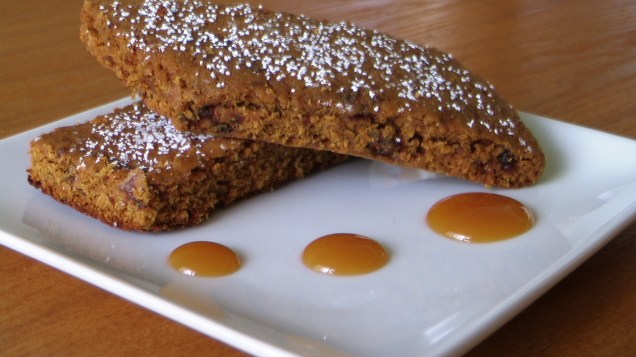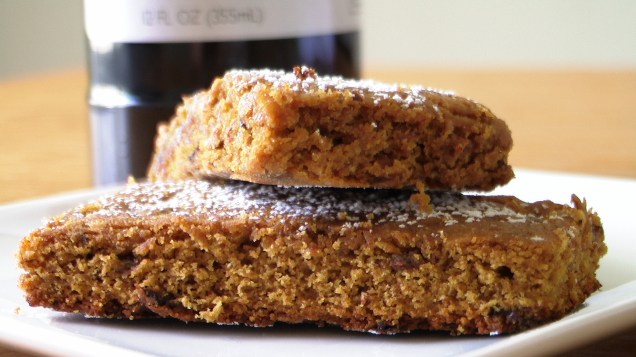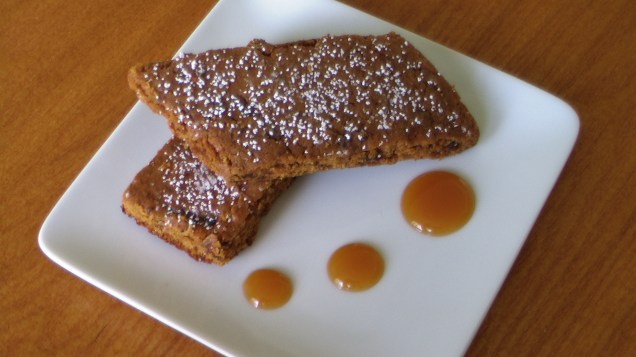Happy Easter week to all of the readers here at HoneyBee’s Patisserie. A few days ago I posted Carrot Cupcakes for the Easter Bunny in all of us and this week’s recipe will focus on the true meaning of Easter celebrations. I know I know it isn’t as fun as the Easter Bunny, dying eggs, or filling plastic eggs and baskets to set around the house and yard for the kids, but it is getting back to basics. At Easter we should remember what happened in the ancient days to lead us to celebrate this date year after year. In light of discussing ancients and history, I decided to find yet another forgotten recipe in history that was once extremely popular. Now I didn’t go all the way back to the time of Jesus’ death and resurrection for a pastry, but the late 1800’s deemed far enough for today.
Hermit Cookies are mysterious in origin. It is known that they began appearing in cookbooks around the New England area earliest, such as Miss Maria Parloa’s New Cook Book of 1880 or The Boston Cooking School Cook Book by Fannie Merritt Farmer in 1896. It is said that the name ‘Hermit’ was coined for the cookies ability to be hidden away and stored for long periods of time without spoiling, much like a hermit hides. According to the Betty Crocker Cookie Book of the late 1800’s, the Hermit cookie was incredibly popular and would accompany sailors on ship voyages leaving out of Cape Cod. The cookies would be placed in canisters and tucked away into chests and kept for the sailors to enjoy on their long voyages. To ensure that the cookies don’t bake up like a dry, overly spiced, cardboard-esque hard tack I made sure to bake the cookies into logs and cut them while they are still slightly warm rather than the traditional formulas calling for a drop style panning method. Whether you take Hermit Cookies out to sea, pack them in an Easter basket, or in a packed lunch for work, these old-fashioned cookies are perfectly soft, chewy, and full of sugar and spice worthy of revival this holiday.
Hermit Cookies
Ingredients:
- 1 cup Raisins
- 2 tbsp. Crystallized Ginger, finely chopped
- 8 tbsp. (1 stick) Unsalted Butter
- 1 tsp. Ground Cinnamon
- ¼ tsp. Ground Allspice
- 2 cups All-Purpose Flour
- ½ tsp. Baking Soda
- ½ tsp. Salt
- ¾ cup Brown Sugar, packed
- ½ cup Molasses (mild or light)
- 2 Eggs
- Powdered Sugar (for dusting)
Formula:
- Adjust oven racks to upper-middle and lower-middle positions and heat oven to 350°. Line two baking sheets with parchment paper. Process raisins and ginger in a food processor until mixture sticks together and only small pieces remain. Transfer to a bowl.
- Heat butter in a saucepan over medium-low heat, until butter is nutty brown in color. Stir in the cinnamon and allspice. Cook until the spices are fragrant. Stir butter mixture into the raisin mixture and stir until well combined. Cool to room temperature.
- Combine the flour, baking soda, and salt in a bowl. Stir brown sugar, molasses, and eggs into the cooled butter mixture until fully incorporated. Fold in the flour mixture (dough will appear very sticky) and refrigerate, covered, until firm, at least 1 ½ hours or up to 24 hours.
- Divide the dough into quarters. Transfer dough to a lightly floured surface and roll out into a 10 inch log. If you prefer you can use a spoon or portion scoop and place round drops of dough on prepared baking sheets and continue as follows, however there will be a noticeable texture change in the cookie. Transfer to the prepared baking sheets and bake each log (4 in total) for 15 to 20 minutes. Be sure to rotate the sheets halfway through baking time for even baking. Remove from oven and let cool on baking sheets for about 5 minutes then transfer parchment to a cooling rack to cool completely.
- Once cooled, cut logs into 2 inch bars. Dust with powdered sugar and serve.
Special Thanks To:



